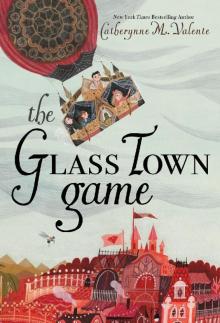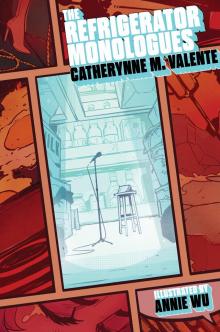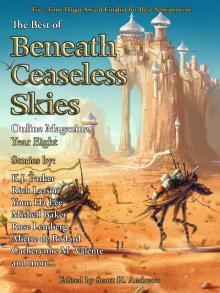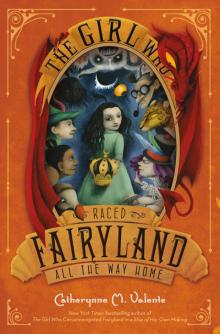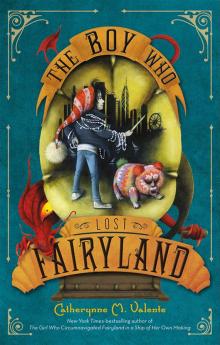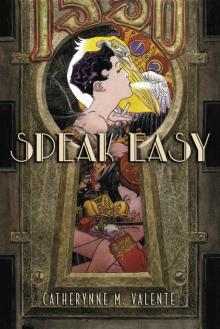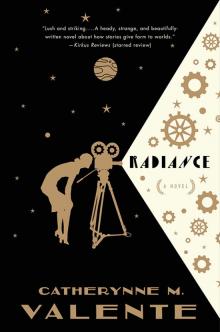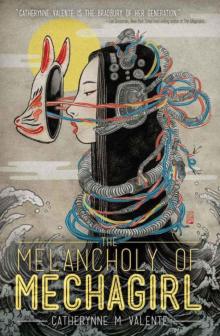


Inquisition, Page 6
Green, Toby
Ciudad Real 1483
BY THE TIME the Inquisition began its work in Seville, Ciudad Real, remote and high on the Castillian meseta, was waiting to explode. If one strayed onto the plains north towards Toledo or south towards Cordoba, one entered baking, desiccated, hostile territory. It was easy to internalize that hostility and direct it at one’s friends and neighbours. In April 1483 the new Inquisition established a court in Ciudad Real; the riots against the conversos of 1474 had passed, but this time they would not be allowed to escape.
As soon as the court was established it was flooded with business. The Inquisition office was located in a public area, and if someone was seen entering others would worry about who was being denounced. People knew that if they did not present themselves freely to declare something that was – or ought to have been – on their conscience, they could well end up on the quemadero. Thus one denunciation led to another, and the new court was so pressured that their only free days were holy days and those Sundays when no autos were held.114
One of the first cases was against Sancho de Cibdad and his wife Mari. They had fled the city two weeks before the arrival of the inquisitors. Sancho was a powerful local figure, a town councillor and tax collector with many enemies. He was accused of acting as a rabbi, keeping Jewish festivals and mocking Jesus; he had been seen praying in Hebrew in a cart, and insisted that people bring him animals alive (presumably so as to kill them according to Jewish ritual); other people came from all over the converso quarter to his house to pray in a tower there.115 Another converso religious leader in Ciudad Real was said to be Maria Diaz, ‘la Çerera’, who had also fled; she was said by many witnesses to keep the Jewish sabbath, lighting a candle on Friday nights, refusing to work on Saturdays, and never going to church.116
The truth was that evidence of Judaizing activity among the conversos was extremely mixed. There was some proof, such as the Hebrew prayer found in the house of the cobbler Juan Alegre117 and the Hebrew prayer book found being read by the spice merchant Juan Falcón on the Jewish sabbath.118 Much of the evidence, however, was stretched to its limits. Many of the depositions against the Çibdad family and la Çerera, for instance, referred to events that had happened at least ten years previously – and in Çibdad’s case, some of it was from thirty years before. Another defendant, Juan González Pintado, had paid for an altar and a statue of the Virgin in the church of Santo Domingo, and numerous priests said they had seen him at mass and confessing, and that he ate pork. Tragically for Pintado, however, he had been the secretary of John II and Henry IV, and the political rather than strictly religious nature of the Spanish Inquisition ensured that he was burnt anyway.119
So the Inquisition in Ciudad Real, far from only punishing genuine heretics, burnt just as many good Catholics as it did people whose religious outlook was more mixed. As would prove often to be the case, sincere Catholics were among the principal victims of the Inquisition. In fact, what really emerges from the trial records of the city is the envy and family discord at the heart of so many of the cases – emotions that meant that some of the denunciations were sure to be malicious.
In the trial of Sancho and Mari de Çibdad, for instance, one of the witnesses was the couple’s daughter Catalina, who gave evidence of her life in the family home as a child many years before and also accused her brother Diego and sister Teresa of Judaizing.120 In another case, the son of one Catalina de Zamora went to his mother’s house when he heard that the Inquisition was to come to Ciudad Real, and said, ‘Listen, you old whore: if the inquisitors come here, I’ll make sure that you and your sisters are burnt as Jews, and I’ll make sure that the bones of your Jewish mother are exhumed and burnt as well’.121 This sorry excuse for a human being, a friar in the town, clearly believed that his family’s blood should not be thicker than water – there should simply be more of it.
Some will find it hard to understand how people could say and do such terrible things. Yet possible motivations are easy to imagine: perhaps Catalina de Zamora’s son had always resented being groomed for a career as a celibate in the Church and had keened for revenge; perhaps he felt excluded by the vestiges of Judaizing culture in his family and wanted to punish others for the shame he felt. Certainly, these were unhappy lives, and for some the persecution of the Inquisition, following on from all this bitterness, was the final straw: one prisoner, Juana Gonzalez, committed suicide on 29 November 1483 by drowning herself in a pool by the house where she was kept under guard.122
Around fifty people are thought to have been burnt in 1483 and 1484 in Ciudad Real, a significant number for a relatively small, isolated town in medieval Spain.123 The cases graphically reveal the reasons for the desperation of the conversos, who had converted from a desire to assimilate but were rejected by the very people with whom they wished to become one. Many of the trials – such as those of Sancho de Çibdad and Juan González Pintado – were clearly political. In other cases, people who confessed their sins were burnt anyway.124
The conversos of Ciudad Real were evidently neither all Judaizers nor all Catholics, but occupied various positions in between. With time, they probably would have been assimilated into the wider cultural ambience. Those who really longed to be Jews could have joined the Jewish exodus from Spain in 1492 to lands where they could practise their faith openly. But the conversos of Ciudad Real were not allowed this luxury, and the flight of so many people from the city on hearing of the coming of the inquisitors merely reflected the fact that they knew that they would not get a fair trial.
This was certainly the case with Sancho and Mari de Çibdad. The distinguished couple fled the brown heart of Castile for the port of Valencia. Here they hoped to escape to Italy. They set sail and were at sea for five days until headwinds drove them back to port. There they were arrested and taken back to Ciudad Real, before being transferred to Toledo – the Inquisition had moved here from Ciudad Real in 1485 – and the following year Sancho and Mari de Çibdad were the first conversos to be burnt to death in an auto in the very city where the anti-converso movement had originally begun, on that rocky redoubt above the plains.125
THEATRE HAS PERHAPS always been the province of religion. At the death of John Paul II in April 2005 and the acclamation of his successor Benedict XVI the seething crowds in St Peter’s Square reminded the world of the spectacle that only faith can deliver. Just a week after Benedict XVI’s inaugural Sunday mass the possibility of theatre’s corruption by power was also apparent. The crowds were still there, as were the newly printed autobiographies of Ratzinger/ Benedict on all the stalls around the piazza. Only in the great cathedral itself, with its hanging friezes of sunlight stilled in the haunting nave, did spirituality fully assert itself above publicity and the potential of every spectacle to turn to violence.
The papacy, with its ancient history and keen appreciation of balances of power, was always a moderating influence on the Spanish Inquisition. In 1481, newly confident from the success of the inquisitors in Seville, Ferdinand had replaced the papal inquisitors of Valencia with his own nominees, Cristofor de Gualbes and Joan Orts. Hearing of this and of the violence of the inquisitors in Seville, Pope Sixtus IV – aware that this all represented a radical departure from previous inquisitorial procedure – protested in January 1482.
Hearing repeated reports of outrages and petitioned by conversos over injustice, soon the pope went further. On 18 April 1482 he issued a new bull which proposed to clip the wings of the new institution. In this Sixtus IV described how the inquisitors had accepted evidence from the enemies and slaves of the accused, how they had proceeded not out of zeal for the faith but out of greed for material gain, and how the result was a procedure with no legitimacy, a pernicious example and a lachrymose scandal for all to see. Instead, he declared, the new Spanish Inquisition could only proceed with the approval of bishops; it had to reveal the names of accusers and witnesses; it had to suspend cases to hear appeals; and it had to accept any confession as having the effect of absolvin
g the defendant.126
Sixtus IV’s proposals were hardly severe but, given the fundamentally political motivations of the new tribunal, the Reyes Católicos were furious. Ferdinand wrote angrily to the pope arguing that the heresy of the conversos was now too widespread to be stemmed except through the institution. Eventually, in October 1482, Sixtus caved in and suspended the norms he had proposed for the Inquisition in Spain.
Soon matters became even worse. In May 1483 the court of appeal for the Inquisition in Castile was moved from Rome into the hands of the archbishop of Seville, Íñigo de Manrique. In July 1485 the Reyes Católicos even ordered the Church authorities in Toledo to suspend papal bulls obtained by conversos to protect them from the new tribunal.127 Hereafter the ability of the Inquisition in Spain to act without papal interference was certain.
It was this process that permitted the Inquisition to spread rapidly across Spain. After the tribunal was installed in Seville in 1480, new courts of the Inquisition were founded at Cordoba, Valencia and Zaragoza in 1482, Barcelona in 1484, Llerena and Toledo in 1485, Murcia, Valladolid and Majorca in 1488 and Cuenca in 1489.128 Autos also occurred where there was no tribunal, such as at Guadalupe in 1485, where fifty-two people were burnt in person, twenty-seven in effigy, and forty-six corpses were dug up and burnt for good measure.129 The chronicler Hernando de Pulgar – himself a converso – said that 2,000 people were burnt across Spain in these years;130 or, as another chronicler put it ‘an infinite number were burnt and condemned and reconciled and imprisoned in every archbishopric of Castile and Aragon. And many of the reconciled reverted to Judaizing and were burnt because of it, in Seville and across Castile’.131
This expansion of the Inquisition was pushed through by the zealous Tomás de Torquemada, the first inquisitor-general. Torquemada was a dark man with a healthy complexion. He was a Dominican friar and the confessor of the Reyes Católicos; when he tried to tell Isabella that he was only human, she is said to have replied, ‘Confessor, I only feel that I am with an angel from heaven when I am with you’.132
Torquemada was appointed inquisitor-general on 17 October 1483, and the following year the Suprema, or supreme council, was founded under his leadership. He had the power to appoint inquisitors as he saw fit, and in October 1484 all the inquisitors gathered at a council in Seville after which Torquemada issued a set of instructions to guide their judicial practice. He remained at court until 1496, suffering badly from gout in his later years.133 The rich diet which tends to lead to this condition may also have produced an excess of full-bloodedness which his life as a monk could not satisfy; perhaps this made him peculiarly suited to the demands of his job with the Inquisition, which required, after all, a peculiar mixture of anger, repression and energy.
Under Torquemada’s stewardship of the Inquisition, Spain became a very different place. The fires spread from Seville in the south to Zaragoza in the north. Everywhere people were aware that something radically new had begun. By 1488 there were so many prisoners that the jails were full and people had to live under house arrest instead.134 An atmosphere of extremism developed which meant that the expulsion of the Jews, in 1492, and of the Muslims of Granada in 1502, seemed natural steps. The convivencia had gone forever, and by 1526 – after the forced conversion of the Muslims of Aragon – no non-Catholics would be permitted to form part of the Spanish nation. The development of the Inquisition implied that loyalty to the state required adhering to the new militancy; a piece of aggression that had been conceived in political expediency had ended up dismantling a way of life.
IN ZARAGOZA, THE AUTOS rumbled on through the last years of the 15th century. By 1502, at least 116 people had been burnt, with another thirty-two in effigy.135 The struggles between Ferdinand and the papacy over the new inquisitors, and between Garces de Marcilla and his relatives and the officials in Teruel, had been resolved in fire; there should now have been no question but that the institution was here to stay, but the Aragonese continued to resist it.
Over the next fifty years, appeals were regularly made in Aragon for the reform of inquisitorial procedure. This culminated in 1533, when during the Aragonese Cortes at Monzón a violent protest occurred against the new institution. According to representatives at the Cortes, inquisitors had imprisoned people for crimes outside their jurisdiction; they had tried people where there was no evidence of heresy and just a few blasphemous words had come out in the heat of the moment; they had threatened grocers with the Inquisition when they came with their wares to inquisitorial offices.136
One of the main locations of resistance was Sicily, at the time subject to the inquisitorial court of the crown of Aragon. Here in Palermo, sheltered from the world by the great bay and the knife-edged mountains behind the port, over seventy people were killed in autos between June 1511 and January 1516.137 Thirty-five people were burnt in 1513 alone. The Sicilian parliament protested at the proceedings, ‘by which people were taken to the stake shouting out their innocence in vain and that they had only confessed under torture their guilt, which did not in fact exist’.138 The atmosphere was so highly charged that year that when an unbalanced man, Battista Rizzo, seized the host from a priest’s hands on Easter day in Catania he was burnt alive by a mob.139
Matters came to a head on news of the death of Ferdinand in 1516 when mobs gathered in the streets of Palermo. The Aragonese viceroy had to flee almost 200 miles across the island to Messina to escape. The mob turned its attentions to the Inquisition, which was located in the viceroy’s palace in Palermo. For three days the palace was besieged by the crowd, until eventually the inquisitor, Cervera, fled holding the Eucharist in his hands. Brought in to do God’s bidding, one wonders how the inquisitor explained such events to himself: God’s judgment? The triumph of the devil? Cervera rushed to the waterside and escaped into the great bay by ship, while the mob sacked the entire palace, burning the Inquisition’s archive, freeing its prisoners, and stealing even the windows and the doors.140
Such vengeance is particularly striking since both Aragon and Sicily had had inquisitors before under the old medieval institution. The string of revolts from Sicily to Teruel and Zaragoza emphasized the fact that this was a fundamentally new inquisition. Confiscation of goods had not existed previously, and the secrecy of witnesses had been guaranteed only in cases where there were threats against their lives.141 What is perhaps of most significance in these complaints and rebellions is that neither Aragon nor Sicily had been affected by the civil wars of Castile. There was thus no need for a persecuting institution or scapegoat, even though as in Castile there were large numbers of conversos. It is this above all which reveals that the religious grounds for the institution of the Inquisition were a sham and an invention of propaganda.142
The resistance of Aragon and the papacy to the new Spanish Inquisition invites us to speculate that those who had lived with the old Inquisition sensed that, under the Reyes Católicos, an arbitrariness and cruelty had accompanied the increase in inquisitorial power. These people did not trust the monarchs’ stated motivations for their violent conduct. Even if we are to judge the Inquisition according to the standards of the time it is found wanting.
The really important question to ask is how this position could have been prevented in the first place; how the factionalism and the violent hatreds which settled on a sort of racial persecution could have been prevented.143 Certainly, if Castile had not been riven by conflicts, this reality and the new Inquisition could have been avoided. These conflicts were part of a searching towards a national identity in Spain, something which for linguistic and cultural reasons occurred earlier here than elsewhere in Europe.144 The factionalism was in part the result of weak kings, but it also resulted from powerful interest groups grasping at power and attempting to strengthen their material position, unaware that by inventing the converso enemy and painting it in the worst light possible, all sorts of disastrous consequences would result.
ON THE GROUND FLOOR of the famous Prado museum in Madrid
, near the room where the macabre creations of Hieronymus Bosch and Pieter Breughel the Elder hint at some of the darkness that can be involved in being human, is a gallery devoted to the work of Pedro de Berruguete. Berruguete was perhaps the most important artist in the Spain of the Reyes Católicos. One of the paintings in the gallery was finished in around 1495; it is called Auto de Fe. Berruguete’s Auto de Fe depicts St Dominic presiding over an auto of Albigensian heretics in the 13th century. The Albigensians had been the first targets of the medieval Inquisition in southern France. The saint is portrayed benevolently, but what is most striking is the air of serenity and justice which envelops the dignitaries around him. The prelates, nobles and monks barely watch the little men beneath them as they are led to the flames. One of the monks is even asleep, his face red with postprandial torpor. Meanwhile, two of the Albigensians are already being licked by the flames, and others are being taken up to join them.
Whenever I visit the Prado, taking a break from the archives of the Inquisition, I go to look at this painting. It is the calmness, indeed the indifference, of the dignitaries to the fates of the condemned which is striking. Groups chosen for sacrifice are always dehumanized by societies, just like the goat offered to Abraham by God in place of the life of his son Isaac. Their suffering is not supposed to be a cause for concern. One suspects that what Berruguete has successfully depicted here is the attitude of many of his contemporaries towards the fate of the conversos.
One of the details of this painting relates to the condemned men at the stake. Here, short metal spurs stick out from beneath their genitals; the spurs taper away at the end, as if circumcized. With this oblique reference to the Judaizing conversos, there can be no doubt that Berruguete intends his portrait of the past to raise important moral questions about the present. Even today, it speaks to us about the nature of persecution and the forces which can provoke it, which bubble away beneath even the wealthiest and most ordered of societies.



